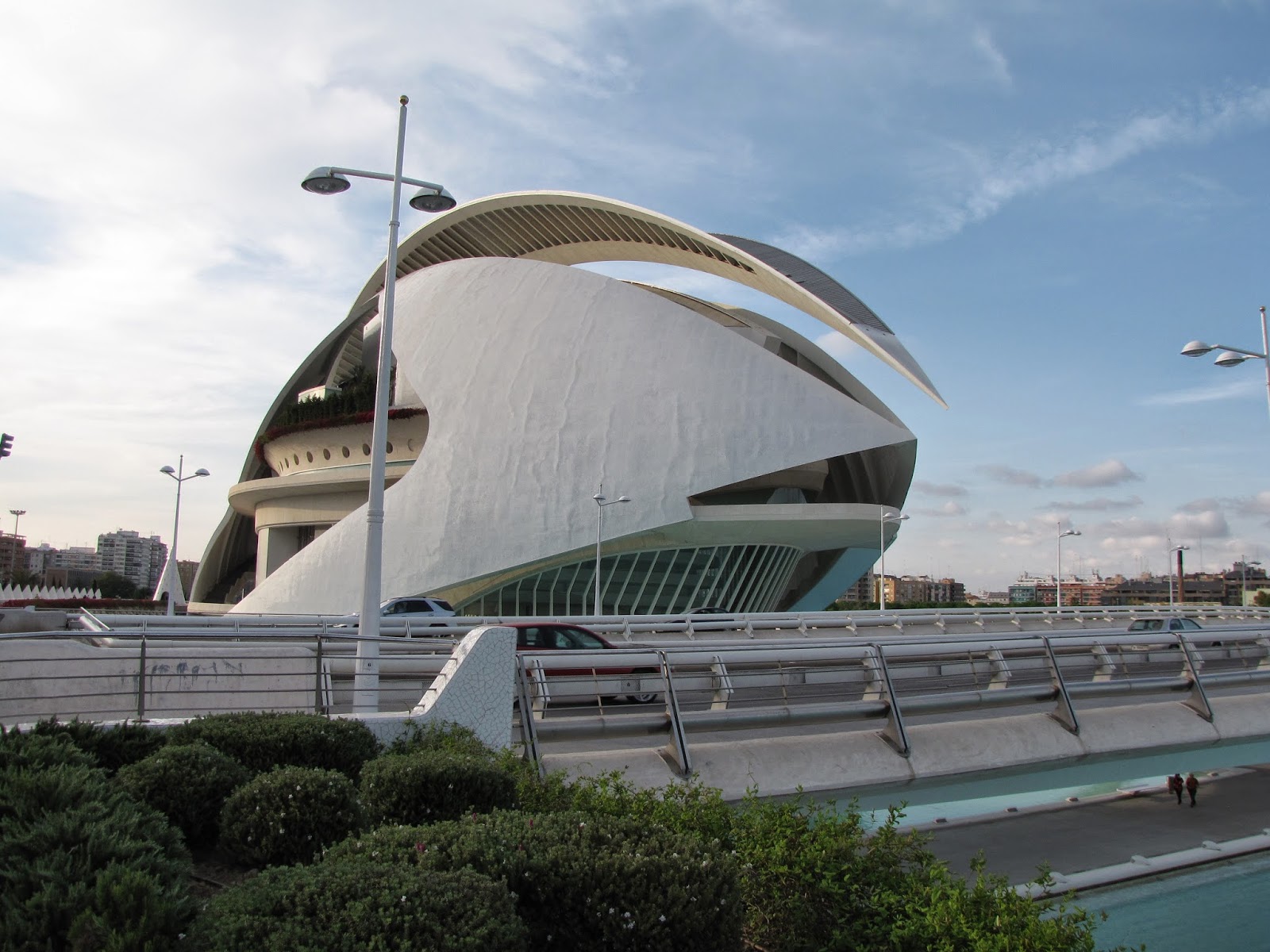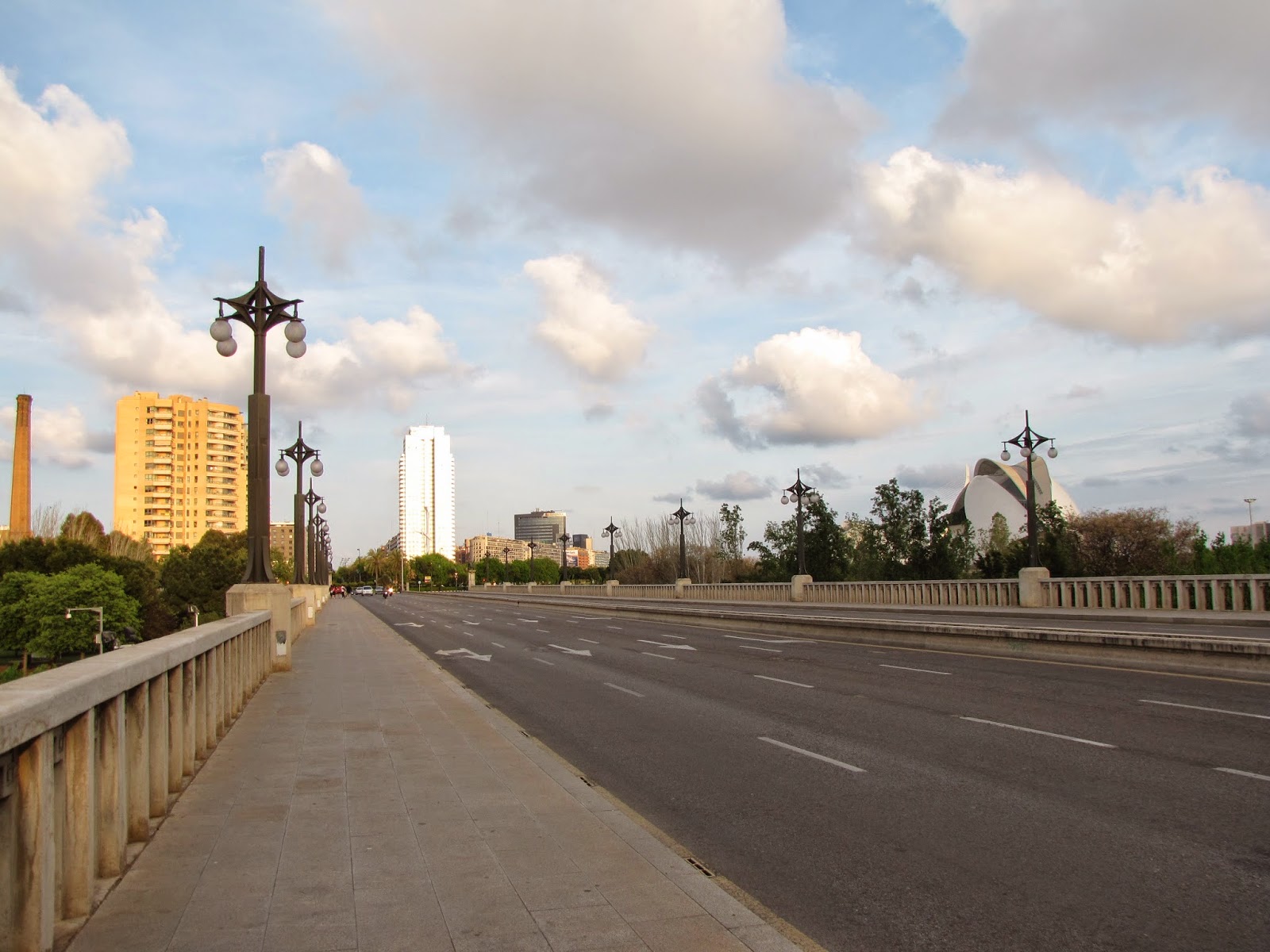VALENCIA
Maravillosa ciudad
Valencia is the capital of the autonomous community of Valencia and the third largest city in Spain after Madrid and Barcelona, with
around 800,000 inhabitants in the administrative centre. Its urban area extends
beyond the administrative city limits with a population of around 1.5 million
people. Valencia is Spain's third largest metropolitan area,
with a population ranging from 1.7 to 2.5 million. The city has global city status.The Port of Valencia is the 5th busiest container port in Europe and busiest container port on the Mediterranean Sea.
The Valencia Cathedra
The Valencia Cathedral was
called Iglesia Mayor in the early
days of the Reconquista, then Iglesia de la Seo (Seo is
from the Latin sedes, i.e.,
(archiepiscopal) See), and by virtue of the papal concession of 16 October
1866, it was called the Basilica Metropolitana.
It is situated in the centre of the ancient Roman city where some believe the
temple of Diana stood. In Gothic times, it seems to have been dedicated to the
Holy Saviour; the Cid dedicated it to the Blessed
Virgin; King James I of Aragondid
likewise, leaving in the main chapel the image of the Blessed Virgin, which he
carried with him and is reputed to be the one now preserved in the sacristy.
The Moorish mosque, which had been converted into a Christian church by the conqueror, was
deemed unworthy of the title of the cathedral of Valencia, and in 1262 Bishop
Andrés de Albalat laid the cornerstone of the new Gothic building, with three
naves; these reach only to the choir of the present building. Bishop Vidal de
Blanes built the chapter hall, and James I added the tower, called El Miguelete because it was blessed on St.
Michael's day in 1418. The tower is about 58 m high and topped with a belfry (1660–1736).













PALAU DE LES ARTS REINA SOFIA
Opera House Building
Opera House Building
A
spectacular building, designed by the Valencian architect Santiago Calatrava,
dedicated to promoting the performing arts. With an extension of 55,000 square
meters, the Palau de les Arts Reina Sofia will become one of the finest
international venues for theatre, dance, opera and music concerts.





Prince Felipe Museum of Science
This museum belongs to the City of Arts and Sciences complex. The building is over 40,000 square meters in area and it was designed by Santiago Calatrava and reminds a whale skeleton. This is one of those museums where forbidden NOT to touch. It is orientated to learning the sciences through experience, so everything is graphically displayed, with huge texts and pics, experiments, buttons to touch and experience... perfect to go with kids of 7-12 years!



The Estació
del nord (North Station)
Public transport is provided by the Ferrocarrils
de la Generalitat Valenciana (FGV), which operates
theMetrovalencia and other rail and bus services. The Estació del
nord (North Station) is the main railway terminus in Valencia. A new
temporary station, Estación de València-Joaquín Sorolla, has been
built on land adjacent to this terminus to accommodate high
speed AVE trains to and from Madrid, Barcelona, Seville and
Alicante. Valencia Airport is situated 9 km (5.6 mi) west
of Valencia city centre. Alicante Airport is situated about
170 km (110 mi) south of Valencia.


Muslim Balansiya
The city surrendered without a fight to the invading Moors (Berbers and
Arabs) in 714 AD, and the cathedral of Saint Vincentwas turned into a
mosque. Abd al-Rahman I, the first emir of Cordoba, ordered the city
destroyed, but several years later his son, Abdullah, had a form of autonomous
rule over the province of Valencia. Among his administrative acts he ordered
the building of a luxurious palace, the Russafa, on the outskirts of the city
in the neighbourhood of the same name. So far no remains have been found. Also
at this time Valencia received the name Medina al-Turab (City
of Sand). When Islamic culture settled in, Valencia, then called Balansiyya,
prospered from the 10th century, due to a booming trade in paper, silk,
leather, ceramics, glass and silver-work. The architectural legacy of this
period is abundant in Valencia and can still be appreciated today in the
remnants of the old walls, the Baños del Almirante bath house,
Portal de Valldigna street and even the Cathedral and the tower, El
Micalet (El Miguelete), which was the minaret of the old
mosque.

There is a lot to say about Valencia - it's history and sightseeings but it's better to take a look at some more pictures from this majestic city... and then you can find more info for this destination from the sources that we've used for this article.













Sources:
www.en.wikipedia.org
www.valencia-cityguide.com/tourist-attractions/museums/museo-de-las-ciencias-principe-felipe.html
No comments:
Post a Comment